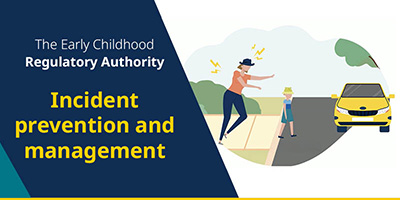 News stories of strangers returning children to early childhood services after finding them alone on busy roads or in carparks are stark reminders of the need for vigilance.
News stories of strangers returning children to early childhood services after finding them alone on busy roads or in carparks are stark reminders of the need for vigilance.
It only takes a moment.
If a child leaves your service alone and unnoticed, it doesn't matter how long they’re gone or how far they venture, they're in danger.
The Early Childhood Regulatory Authority (ECRA) receives notifications of serious incidents where children have left services by themselves.
In some instances, members of the public have brought the child back and educators hadn't noticed they were missing.
We all think something like that would never happen to us, but could it?
What do you have in place at your service to prevent this happening?
For a child to leave the premises undetected and alone, a service usually has failures in 3 key areas:
- environment (e.g. unsecured gates, and climbable fences)
- supervision (e.g. distracted staff, and infrequent head counts with no roll calls)
- knowledge of children (e.g. knowing which children need to be more closely supervised or are known climbers, and unstimulating programming).
Identifying these potential failures means that you can put control measures in place to ensure they don't occur.
Incident prevention and management is one of ECRA's
regulatory priorities.
Watch our animated video illustrating the failures that allow children to leave unnoticed, the control measures services should have in place, and the actions needed to effectively manage the incident.